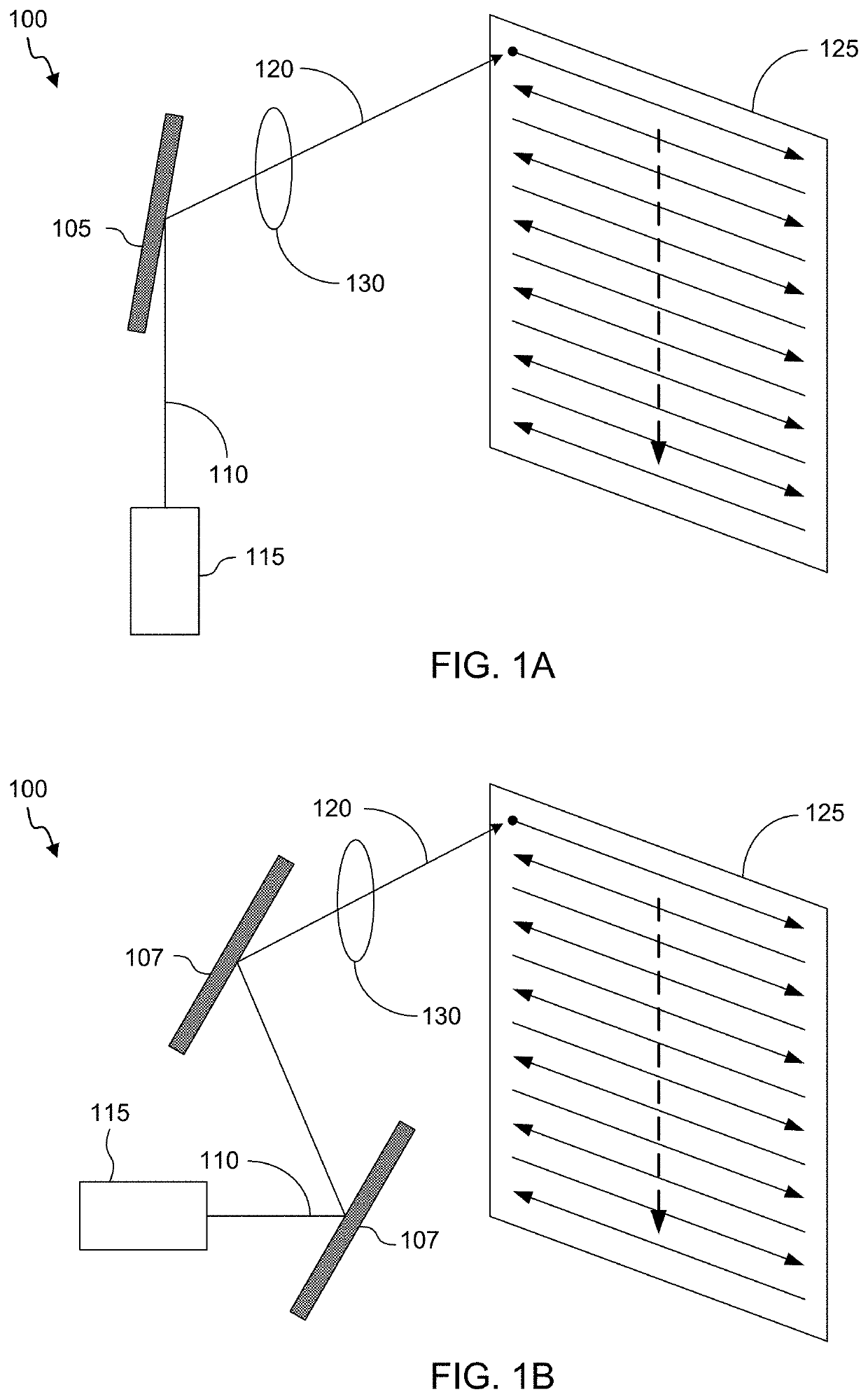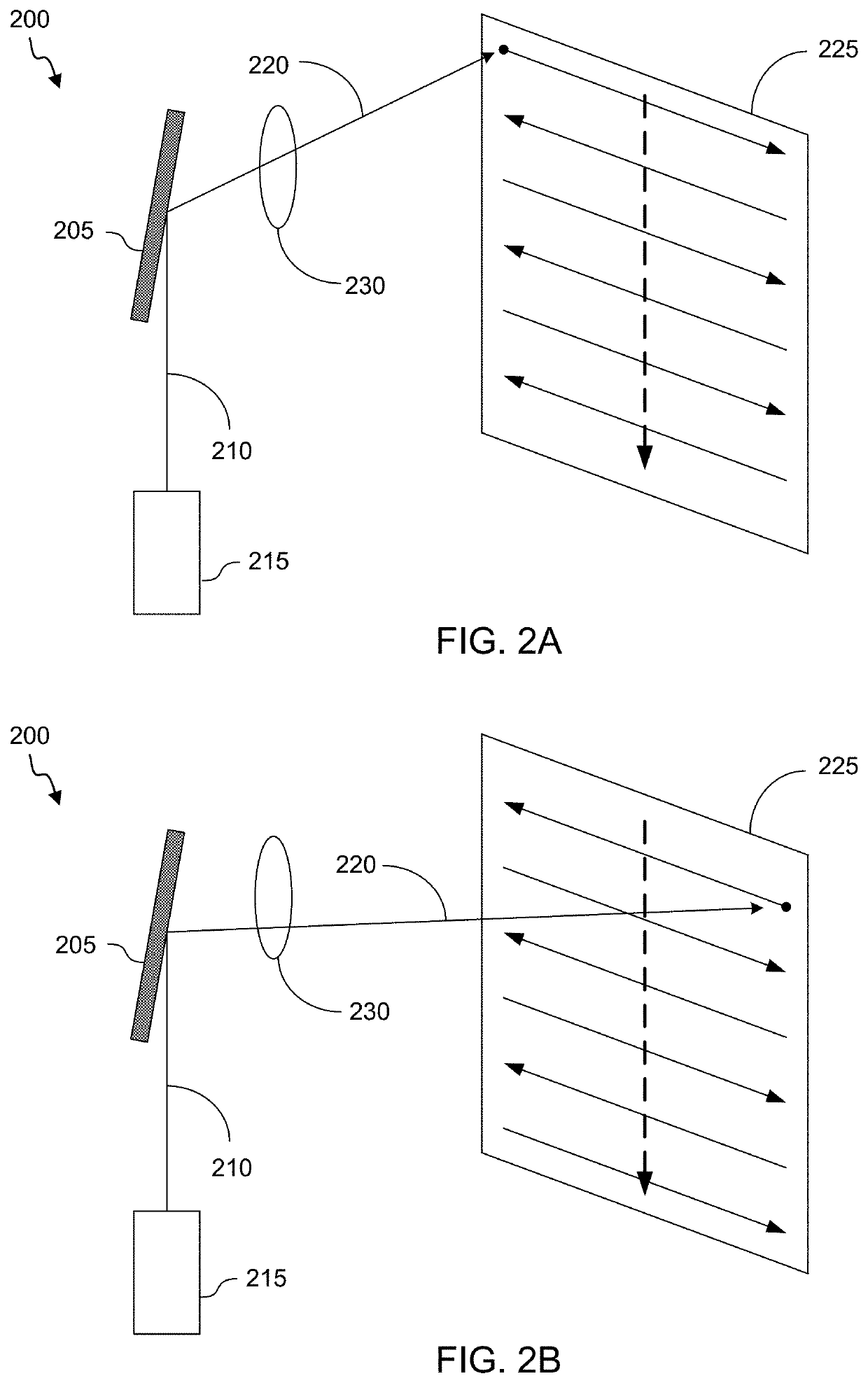Method and system for reducing line separation artifacts in interlaced image projection
a line separation artifact and interlaced image technology, applied in the field of line separation artifact reduction in interlaced image projection, can solve the problems of undesirable observational artifacts that are difficult to eliminate, interlaced scan configurations, etc., and achieve the effects of reducing flicker observed, increasing perceived frame rate, and difficult to elimina
- Summary
- Abstract
- Description
- Claims
- Application Information
AI Technical Summary
Benefits of technology
Problems solved by technology
Method used
Image
Examples
example 2
[0086 is the image projection system of example 1, wherein the optical subsystem includes one or more laser sources.
[0087]Example 3 is the image projection system of examples 1-2, wherein the scanning mirror comprises a microelectromechanical system (MEMS) mirror having two independently rotatable axes.
[0088]Example 4 is the image projection system of examples 1-3, wherein the scanning mirror comprises two microelectromechanical system (MEMS) mirrors in sequence, wherein each MEMS mirror has one rotatable axis.
[0089]Example 5 is the image projection system of examples 1-4, wherein the scanning mirror has a fast oscillation axis and a slow oscillation axis.
[0090]Example 6 is the image projection system of examples 1-5, wherein the projection optics include one or more lenses, mirrors, beam splitters, filters, prisms, polarizers, waveguides, diffractive optical elements, windows, or any combination of these.
[0091]Example 7 is the image projection system of examples 1-6, wherein each i...
example 12
[0096 is the image projection system of example 11, wherein the first image field, the second image field, the third image field and the fourth image field are generated from a rendered frame corresponding to a first image of the plurality of images.
[0097]Example 13 is the image projection system of examples 1-12, wherein the pseudo-randomly or quasi-randomly selected scan pattern sequence corresponds to a sequence of the plurality of different scan patterns that repeats after multiple images of the plurality of images are projected.
[0098]Example 14 is a method for projecting an image, the method comprising: generating a modulated light beam, wherein the modulated light beam is modulated according to a plurality of image fields in sequence; illuminating a scanning mirror with the modulated light beam to generate a reflected light beam; and projecting the reflected light beam to generate a plurality of images, wherein each image of the plurality of images is generated by projecting m...
example 27
[0111 is a computer program product comprising a non-transitory computer readable storage medium including instructions that, when executed by one or more processors, cause the one or more processors to perform operations including: controlling an optical subsystem so that the optical subsystem emits a modulated light beam modulated according to a plurality of image fields in sequence; and adjusting an orientation of a scanning mirror positioned to intercept the modulated light beam and generate a reflected light beam, wherein adjusting the orientation of the scanning mirror includes actuating an actuator of the scanning mirror according to sequence of scan patterns, wherein the sequence of scan patterns corresponds to a randomly selected scan pattern sequence of a plurality of different scan patterns, to a pseudo-randomly selected scan pattern sequence of the plurality of different scan patterns, or to a quasi-randomly selected scan pattern sequence of the plurality of different sc...
PUM
 Login to View More
Login to View More Abstract
Description
Claims
Application Information
 Login to View More
Login to View More - R&D
- Intellectual Property
- Life Sciences
- Materials
- Tech Scout
- Unparalleled Data Quality
- Higher Quality Content
- 60% Fewer Hallucinations
Browse by: Latest US Patents, China's latest patents, Technical Efficacy Thesaurus, Application Domain, Technology Topic, Popular Technical Reports.
© 2025 PatSnap. All rights reserved.Legal|Privacy policy|Modern Slavery Act Transparency Statement|Sitemap|About US| Contact US: help@patsnap.com



